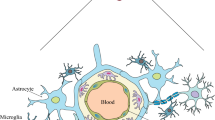Abstract
Investigation has been carried out on the various processes which together produce the clinical and pathological picture of malaria.Maegraith [1] suggested the presence of certain ‘initiating factors’ which are thought to be physiologically active substances of relatively simple nature derived from the parasite either as a consequence of host-parasite reaction or arising from tissue damage. A good deal of progress has been made in the search for these initiating factors in malaria and some of our findings indicate clearly that pharmacologically active substances, including kinins, circulate in increased concentration in the blood as the disease progresses.
This report, however, illustrates the possible pharmacological role exhibited by plasma kinins in the acute stages of malarial infection. This work was prompted by the experimental evidence reported by other workers of the involvement of blood: brain barrier inPlasmodium knowlesi-infected monkeys andP. berghei-infected mice (Migasena andMaegraith [2]). In both animal species increased passage of albumin through the endothelium of the blood vessels into the brain substance and cerebrospinal fluid was demonstrated at the terminal stages of the disease. This study was carried out on non-immune rhesus monkeys (Macaca mulatta) infected withP. knowlesi. As far as human malaria is concernedP. knowlesi is an important parasite since the disease processes which it induces in rhesus monkeys follow a somewhat similar pattern to that ofP. falciparum in man.
Similar content being viewed by others
References
B.G. Maegraith,Pathological Processes in Malaria and Blackwater Fever (Blackwell, Oxford, 1948).
P. Migasena andB.G. Maegraith,Pharmacological Action of Anti-Malarial Drugs. Action of Chloroquine and Hydrocortisone on Blood Brain Barrier in Plasmodium knowlesi Malaria, Trans. R. Soc. trop. Med. Hyg.61, 6 (1970).
A.O. Onabanjo,A Simple Method for the Stimulation of Plasma Kinins, Pharmac. Res. Commun.2, 165 (1970).
A.O. Onabanjo,Pathophysiological Role of Plasma Kinins in Malaria, W. Afr. Pharmac. Drug. Res.1, 24 (1974).
A.O. Onabanjo andB.G. Maegraith,Kallikrein as a Pathogenic Agent in Plasmodium knowlesi Infection in Macaca mulatta, Br. J. exp. Path.51, 523 (1970).
B.G. Maegraith, K. Devakul andC.S. Leithead,The Terminal Stages of Plasmodium knowlesi Infection in Macaca mulatta. The Clinical State: Resuscitation by l-Noradrenaline, Ann. trop. Med. Parasit.53, 358 (1959).
Author information
Authors and Affiliations
Rights and permissions
About this article
Cite this article
Onabanjo, A.O. The significance of plasma kinins in malaria. Agents and Actions 8, 139–140 (1978). https://doi.org/10.1007/BF01972416
Issue Date:
DOI: https://doi.org/10.1007/BF01972416




